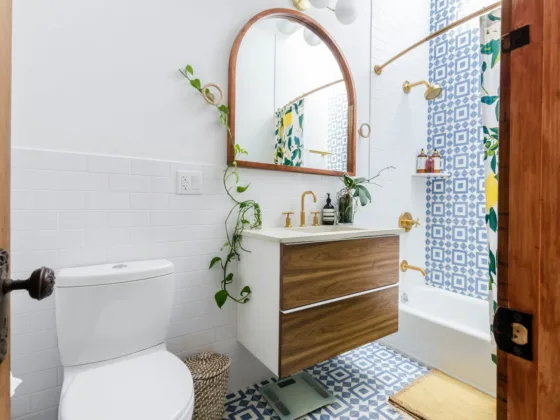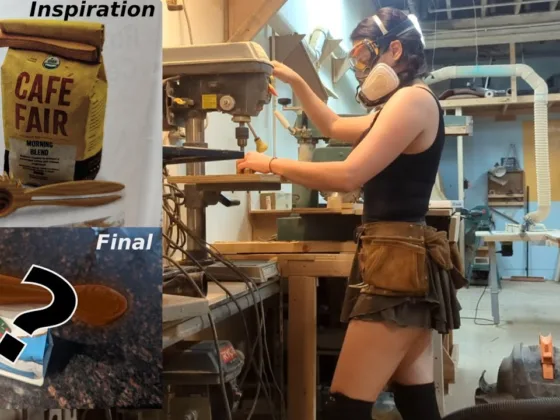Table of Contents Show
Introduction
Formica countertops are a popular choice for many homeowners due to their affordability and style. However, they often face common issues, particularly scratches caused by everyday activities. These scratches can diminish the beauty of the countertops and raise hygiene concerns, making it essential to address them promptly.
This post will explore the typical problems associated with Formica, the impact of scratches on both aesthetics and cleanliness, and how to effectively repair and maintain these surfaces. Understanding these challenges is key to preserving the look and functionality of your countertops for years to come.
Understanding the Dilemma: Common Problems with Formica
Formica countertops are popular in many kitchens and bathrooms due to their affordability and variety of designs. However, they are not immune to damage, with scratches being one of the most common issues faced by homeowners.
Daily activities, such as slicing vegetables, placing heavy objects, or even moving pots and pans across the surface, can contribute to the deterioration of the countertop’s finish, leading to unsightly scratches.
The Effect of Scratches on Visual Appeal
Scratches have a significant impact on the visual appeal of Formica countertops. Since Formica is often chosen for its aesthetic qualities, any visible flaws can diminish the overall design of the kitchen or bathroom.
Scratches can give off an impression of neglect, making homeowners feel the need to take action and restore the surface. This restoration process may require specific methods or products made specifically for repairing scratched Formica countertops.
Hygiene Concerns Associated with Scratched Surfaces
It is also essential to consider the hygiene concerns associated with scratched surfaces. Scratches can harbor bacteria and dirt, making it difficult to maintain proper cleanliness. This issue is particularly important in kitchens where food is prepared.
Ignoring the maintenance of scratched countertops can lead not only to aesthetic issues but also to potential health risks. Therefore, timely repairs become crucial in preserving the functionality and safety of the surfaces.
RELATED: Transform Your Eat-In Kitchen into a Cook’s Kitchen: A Step-by-Step Guide
Assessing the Damage: Identifying Scratch Severity
When it comes to maintaining your Formica countertops, recognizing the severity of scratches is a crucial first step in determining how to fix scratched Formica countertops effectively.
Scratches can vary significantly in depth and appearance, influencing the repair techniques you choose. Therefore, understanding the types of scratches is essential.

Types of Scratches
1. Superficial Scratches
These are the most common form of damage. Superficial scratches typically penetrate only the surface layer of the Formica and may appear as light marks or fine lines. They can often be minimized or removed using gentle abrasive cleaners or polishing compounds.
2. Deeper Gouges
These represent a more severe form of damage. Deeper gouges are caused by misdirected knife cuts, heavy impacts, or potential pet interactions with the countertops. In many cases, deeper scratches may require more extensive repair methods, such as filling the gouge with a specialized resin or laminate patch.
How to Assess the Damage
To accurately assess the damage on your countertops, inspect the areas carefully under adequate lighting. Examine different sections and gently run your fingers over them to feel for variations in texture.
- If a scratch can be felt but not seen, it is likely superficial.
- Conversely, if you can visibly identify a deeper dent or scrape, this indicates a more serious issue that will require a different approach to fix scratched Formica countertops effectively.
Choosing the Right Repair Method
When it comes to fixing scratched Formica countertops, selecting the appropriate repair method is crucial, as the effectiveness and ease of the repair largely depend on the severity of the scratches.
In this section, we will explore various options, distinguishing between those suitable for minor damage and those designed for more significant imperfections.
1. Repair Options for Minor Scratches
For light scratches that do not penetrate deeply into the surface, several DIY methods can be employed to restore the countertops appearance:
- Sanding: One popular approach involves using a fine-grit sandpaper, which can gently buff away superficial scratches. By sanding the area in a circular motion, homeowners can effectively smooth out the surface without causing further damage.
- Baking Soda Paste: Another viable option includes using a combination of baking soda and water to create a paste, which, when applied with a soft cloth, can help diminish the visibility of minor scratches.
- Countertop Polish: Additionally, the application of a quality countertop polish can enhance the shine while concealing imperfections, resulting in a refreshed look.
2. Repair Options for Deeper Scratches
In situations where scratches are deeper or more widespread, it may be necessary to seek professional repair services for the best results. Expert technicians have the expertise and tools required to effectively address significant damage to Formica countertops.
Techniques such as resurfacing or applying a laminate patch can restore the countertops’ original finish seamlessly. Additionally, professionals can ensure that the repairs are long-lasting, preventing further damage and prolonging the lifespan of the countertop.
DIY Repair Methods for Minor Scratches
Minor scratches on Formica countertops, while unsightly, can often be repaired easily with the right tools and techniques.
1. Touch-Up Paint: A Quick and Cost-Effective Solution
For a quick solution, consider utilizing touch-up paint. This method is both economical and practical.
- Choose the Right Paint: Begin by selecting a touch-up paint that closely matches the color of your Formica surface; many manufacturers offer specific shades designed for their materials.
- Clean the Area: Carefully clean the scratched area with a mild detergent and a soft cloth to remove any dirt or grease, which can hinder adherence.
- Apply the Paint: Once dried, apply the touch-up paint using a small brush or cotton swab, ensuring you fill in the scratch completely.
- Let it Dry: Allow it to dry according to the manufacturer’s instructions, typically requiring several hours.
This technique can significantly disguise minor damage and restore the surface’s overall appearance.
RELATED: How to Safely Remove Stains from Your Quartz Countertop
2. Scratch Repair Kits: A Comprehensive Solution
Another effective option to fix scratched Formica countertops is through the use of scratch repair kits, which are readily available at home improvement stores. These kits usually include a filler compound and a finish coating, marketed specifically for laminate surfaces.
- Clean the Area Again: Start by cleaning the area again to ensure there are no contaminants.
- Read the Instructions: Next, read the instructions on your kit thoroughly; many kits will require you to apply the filler into the scratch and smooth it out using a putty knife.
- Follow Up with Finish Coating: Once the filler has cured, follow up with the finish coating as described.
This method not only addresses the appearance of the scratch but also protects the area from further damage.
Benefits of DIY Repairs
Both touch-up paint and scratch repair kits are generally inexpensive and easy for a DIY enthusiast to manage. By employing these methods, homeowners can maintain the aesthetic value of their Formica countertops without the need for professional intervention.
These simple repairs can extend the life of your countertops and maintain their beauty, making them an integral part of your home’s decor.
DIY Repair Methods for Moderate Scratches
When dealing with moderate scratches on Formica countertops, there are several effective DIY repair methods that can restore the surface without the need for professional assistance.
1. Sanding
One of the most common approaches is sanding, which helps to even out the surface and minimize the appearance of scratches. To proceed with this method, you will require a few essential tools:
- A sanding block
- Fine-grit sandpaper (around 220-grit)
- A damp cloth for cleanup
Steps for Sanding
- Begin by thoroughly cleaning the scratched area to remove any dirt or debris.
- Gently sand the scratched portion, applying even pressure to avoid further damage.
- It is crucial to sand in the same direction as the grain of the Formica to achieve the best results.
- After sanding, wipe the area with a damp cloth to remove any dust particles.
RELATED: Can You Paint Quartz Countertops? Here’s What You Need to Know
2. Using Formica Repair Putty
Another effective method to fix scratched Formica countertops is the use of Formica repair putty. This material is specifically designed for filling in and covering scratches on laminate surfaces. To utilize this method, gather a small amount of Formica repair putty, a putty knife, and sandpaper.
Steps for Using Formica Repair Putty
- Start by cleaning the scratched area, similar to the sanding process.
- Apply the repair putty directly into the scratch, using the putty knife to ensure it fills the scratched area completely.
- After allowing the putty to dry as per the manufacturer’s instructions, you will need to sand it down until it is flush with the surrounding surface.
- Finish by polishing the area gently with a soft cloth to restore its shine.
While engaging in these DIY methods to fix scratched Formica countertops, it is essential to work carefully and methodically. Take your time to ensure each step is completed thoroughly for the best possible outcome.
Preparing the area adequately and following appropriate techniques significantly enhance the effectiveness of the repair process, ultimately preserving your countertops’ appearance and longevity.
Professional Repair Options for Severe Scratches
When dealing with severe scratches on Formica countertops, it is essential to understand the professional repair options available to restore the surface effectively.
For substantial damage that cannot be easily rectified at home, consulting with professionals might be the best course of action. Two primary approaches are resurfacing and complete replacement of the countertop.
1. Resurfacing: A Cost-Effective Solution
Resurfacing is a viable option for many homeowners facing issues with scratched Formica countertops. This method involves applying a new layer of laminate or a similar material to the existing surface, effectively covering the damage while enhancing the overall appearance.
- Preparation: The resurfacing process typically requires careful preparation, which includes cleaning the surface and ensuring that it is devoid of debris and moisture.
- Execution: Professionals often utilize adhesives and specialized tools to achieve a seamless finish.
The costs associated with resurfacing can vary based on the size of the countertop and the complexity of the job, usually ranging from $400 to $800, which is more economical than complete replacement.
2. Replacement: When All Else Fails
Replacement becomes necessary in cases where the scratches and damage are extensive or when the structural integrity of the countertop is compromised. In such situations, the removal of the old countertop is required, followed by the installation of a new one.
The factors influencing the decision to replace include:
- The extent of damage
- Personal preference
- Budget constraints
A new Formica countertop can provide an upgraded look and improved durability, but it does come with a higher price tag, often between $1,000 and $3,000, depending on materials and installation complexity.
Understanding these professional options allows homeowners to make informed decisions on how to fix scratched Formica countertops effectively.
RELATED: Removing Scratches From a Glass Tabletop: Less Than Stellar Results
Preventing Future Scratches: Best Practices
Maintaining the pristine condition of Formica countertops requires proactive measures to avoid scratches. Here are some best practices to help you keep your countertops looking flawless:
1. Use Cutting Boards
One of the most effective strategies is the consistent use of cutting boards when preparing food. Cutting directly on the countertop increases the risk of damaging its surface; therefore, a sturdy cutting board acts as a necessary barrier, defending the countertop against knife marks and abrasions.
It’s advisable to choose boards made of softer materials, such as plastic or wood, as these can minimize wear on the blades while also protecting the Formica.
2. Implement Placemats and Coasters
Another useful tool in preserving your countertops is the use of placemats and coasters. Using these items when placing hot dishes or beverages on the surface can prevent both scratches and heat damage.
Heat and sharp edges are major causes of wear, and incorporating these simple practices can greatly extend the life of your countertops.
3. Position Objects Carefully
It’s a good idea to place heavy or sharp objects on a protective layer instead of putting them directly on the Formica surface. This will help prevent scratches.
4. Clean Regularly
Regular cleaning is crucial for keeping Formica countertops in good condition. Here are some tips to maintain their integrity:
- Use gentle cleaning products specifically made for laminate surfaces.
- Avoid abrasive cleaners or scrubbers that can dull the finish and cause scratches.
- For daily cleaning, use a soft cloth or sponge with mild detergent.
By regularly wiping down your countertops, you’ll not only keep them looking fresh but also prevent any buildup that could lead to scratches over time.

RELATED: How to Paint Over Stained and Varnished Wood Paneling
Conclusion: Maintaining Your Formica Countertops
Maintaining your Formica countertops is essential for both their appearance and hygiene.
Key Takeaways
- Assess the damage before deciding on a repair method.
- For minor scratches, DIY solutions are often sufficient.
- Always prioritize preventive measures to protect your countertops from future damage.
Final Thoughts
For a deeper dive into maintaining your Formica countertops, consider checking resources and communities online. Share your experiences in the comments to help others facing similar challenges.
Credits
- Formica Countertop Photo by Charles & Hudson at Flickr.com
FAQs
The most common problems with Formica countertops include scratches from daily activities, which can detract from their aesthetic appeal and create hygiene concerns by harboring bacteria and dirt.
Scratches significantly impact the visual appeal of Formica countertops, giving an impression of neglect and diminishing the overall design of the kitchen or bathroom.
There are two main types of scratches on Formica countertops: superficial scratches, which only penetrate the surface and can often be repaired with gentle cleaning methods, and deeper gouges, which require more extensive repair techniques like using specialized resins or laminate patches.
For minor scratches, homeowners can use methods such as sanding with fine-grit sandpaper, creating a baking soda paste to buff out the scratch, or applying a quality countertop polish to enhance the shine and conceal imperfections.
Professional repair options should be considered for severe scratches or extensive damage that cannot be easily fixed at home. This includes resurfacing the countertop or complete replacement if the structural integrity is compromised.
To prevent scratches, use cutting boards when preparing food, implement placemats and coasters for hot dishes, carefully position heavy or sharp objects, and clean regularly with gentle cleaning products to maintain their finish.








